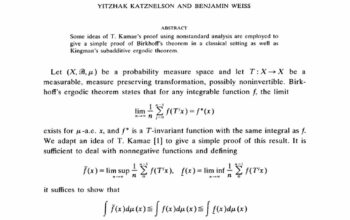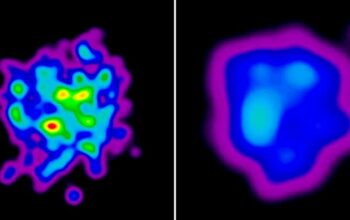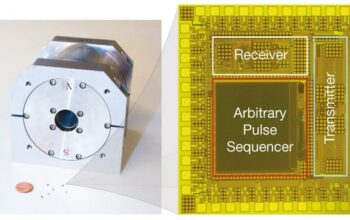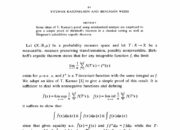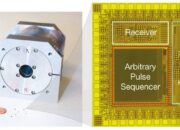Thermopower waves, a fascinating phenomenon at the intersection of thermoelectric materials physics and energy transport, have the potential to revolutionize the manner in which we harness and transmit thermal energy. This article expounds upon the principles underpinning thermopower waves, their implications for energy transport, and the technological advancements poised to propel their application into mainstream energy systems.
At the core of thermopower waves lies the interplay between thermal and electrical energy. The fundamental concept is predicated upon the Seebeck effect, which delineates the generation of an electromotive force (EMF) in a conductive material subjected to a thermal gradient. When a temperature differential is established across a thermoelectric material, charge carriers—electrons in n-type and holes in p-type semiconductors—migrate from the hot side to the cold side, engendering an electric current. In practical terms, this means that heat can be directly converted into electricity without the intermediary of a mechanical energy conversion process, an advantage significantly reducing conversion losses.
The phenomenon of thermopower waves emerges when this heat-driven electrodynamic response occurs in a non-uniform manner, resulting in a propagating wavefront of thermal energy coupled with electrical energy. Understanding the propagation of these waves requires a comprehensive grasp of nonlinear thermoelectric dynamics. For instance, as the temperature gradient exacerbates, the material properties, such as electrical and thermal conductivity, can exhibit nonlinear variations that influence the wave propagation characteristics.
The potential applications of thermopower waves span a plethora of energy systems. One of the most promising fields for implementation is in the realm of waste heat recovery. In industrial settings, substantial amounts of thermal energy are expelled during manufacturing processes. By integrating thermoelectric materials capable of harnessing this waste heat via thermopower waves, industries can metamorphose inefficiencies into profitable energy outputs. Subsequent research is necessary to optimize material properties and configurations that can sustain these propagating waves for efficient energy capture.
Moreover, thermopower waves can be pivotal in the advancement of renewable energy systems. Solar thermal energy systems can derive great benefit from enhanced thermoelectric capabilities. For instance, by developing materials that efficiently propagate thermopower waves under fluctuating thermal inputs found in solar collectors, the reliability and efficiency of solar energy systems can be significantly augmented. Storing thermal energy in the form of electrical energy via thermopower waves presents an unprecedented opportunity for mitigating intermittency issues commonly associated with renewable energy sources.
Additionally, the confluence of nanotechnology and thermoelectric materials heralds a new paradigm of energy transport. Nanoscale materials exhibit unique properties due to quantum confinement effects, which can be tailor-made to optimize their Seebeck coefficients, electrical conductivity, and thermal conductivity. The creation of nanostructured thermoelectric materials emphasizes the potential for enhanced thermopower waves, enabling higher energy conversion efficiencies and lower thermal conductivity losses.
Technological advancements in fabrication techniques, including 3D printing and molecular beam epitaxy, also play a crucial role in shaping the future landscape of thermoelectric devices. These sophisticated methods allow for the precise engineering of thermoelectric materials and structures, facilitating the development of heterogeneous devices that can leverage both thermoelectric and thermopower wave phenomena. Implementing engineered interfaces within materials can significantly improve thermoelectric performance by enhancing the Seebeck response and manipulating phonon transport mechanisms.
Integration into existing energy infrastructures is another consideration that cannot be overlooked. As the world transitions towards smart grids, the incorporation of thermopower wave technology presents compelling opportunities to enhance energy transport efficiency, and demand response capabilities. Smart thermal energy storage systems that utilize thermopower waves can achieve dynamic load balancing, thus optimizing energy delivery based on real-time consumption profiles. Such integration would harness the advantages of decoupling thermal energy from electrical energy supply chains, infusing flexibility that modern energy systems require in order to meet baseline and peak load demands.
However, the path toward realizing the full potential of thermopower waves is not devoid of challenges. The fabrication of high-performance thermoelectric materials is hindered by issues such as cost, material scarcity, and the intrinsic trade-off between the electrical conductivity and Seebeck coefficient—known as the thermoelectric figure of merit (ZT). Future research endeavors must focus on not only understanding the fundamental science of thermopower wave propagation but also creating economically viable and scalable solutions that can be practically employed in energy systems.
In conclusion, the advent of thermopower waves signifies a pivotal leap in energy transport technologies, with applications extending from waste heat recovery to renewable energy integration and beyond. The synthesis of innovative materials, coupled with advances in fabrication techniques and broad deployment in energy infrastructures, will be vital in realizing a sustainable energy future. As researchers and engineers collectively endeavor to transpose theoretical frameworks into practical applications, these vibrant waves of energy transport are poised to ignite a new era in energy solutions, paving the way for a more efficient, sustainable, and resilient global energy landscape.


